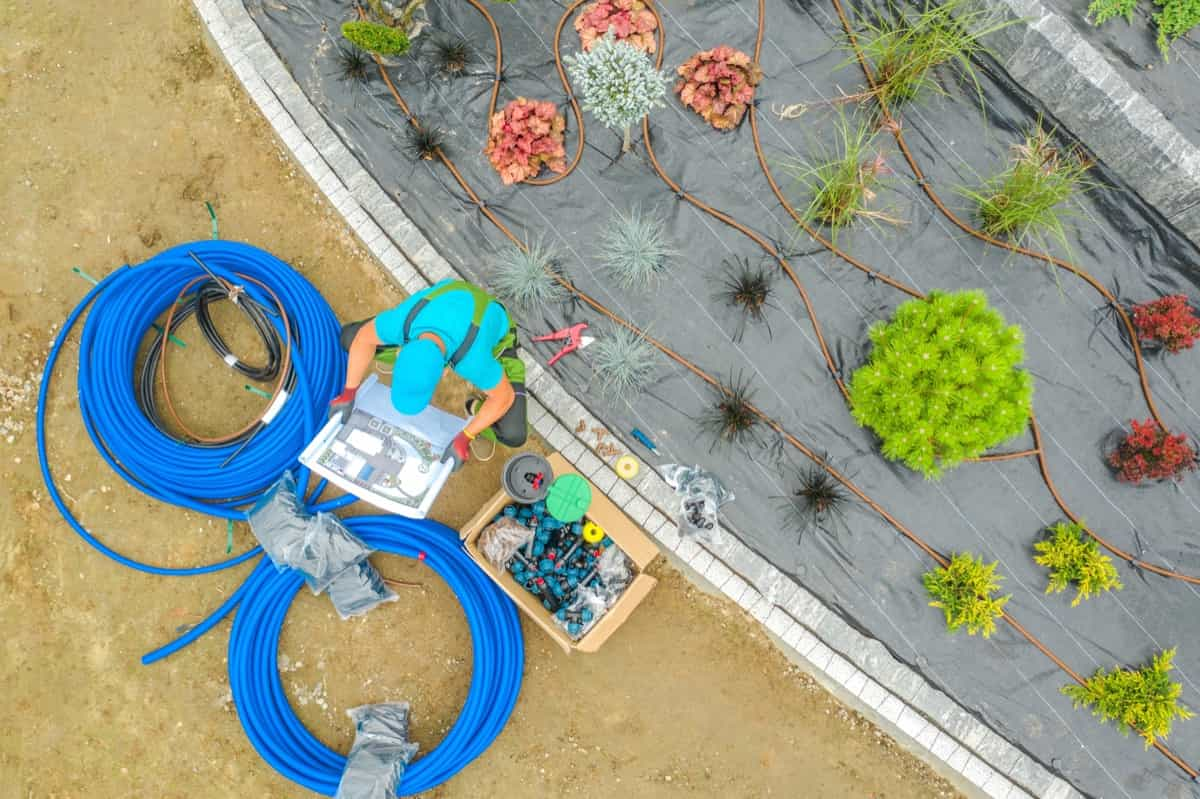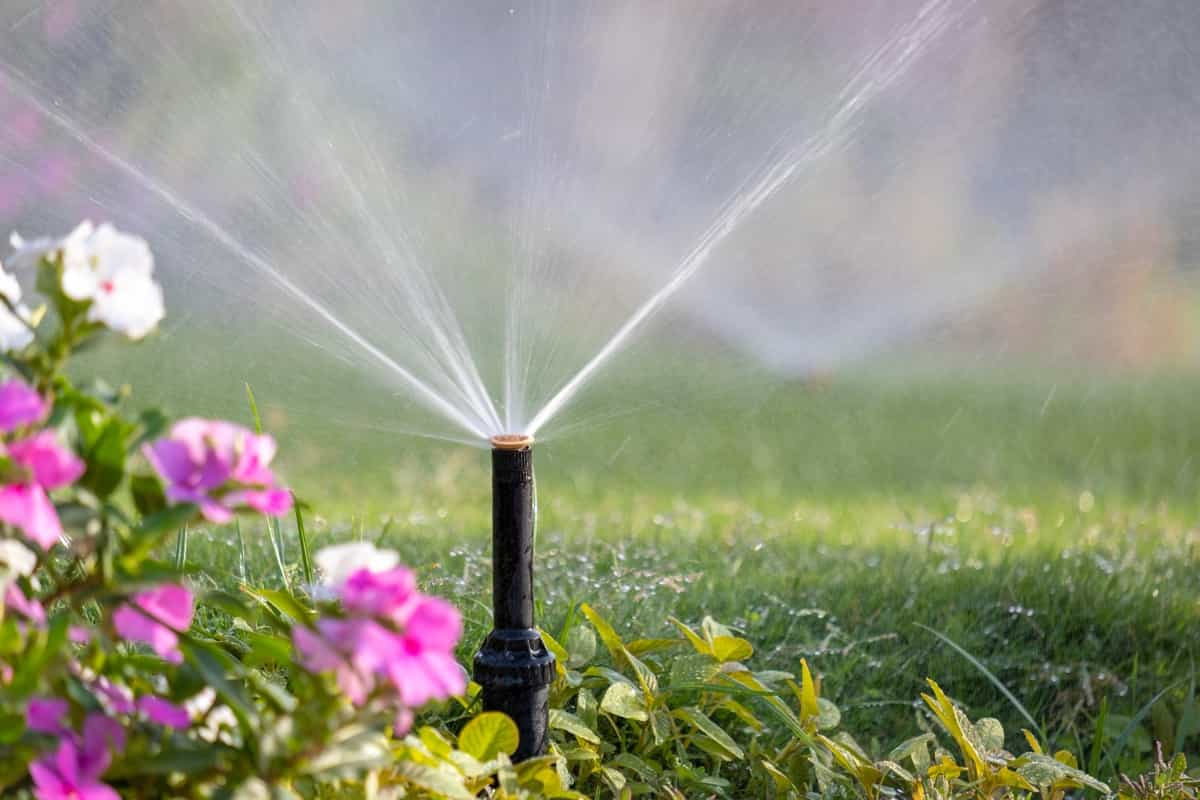Installing a lawn irrigation system can help you save money in the long run by efficiently watering your lawn and reducing water waste. However, it’s important to carefully consider factors such as budget, yard size, and maintenance requirements before deciding. Remember that saving money doesn’t mean compromising the quality of the lawn irrigation system.

Take the time to research reputable contractors who offer competitive pricing and have experience in installing efficient systems. With careful planning, negotiation skills, and consideration of alternatives, you’ll enjoy a beautiful green lawn and significant savings on water usage.
How to Save Money on Installing a Lawn Irrigation
Understanding the Basics of Lawn Irrigation Systems
Lawn irrigation systems are vital for maintaining a healthy and thriving lawn. They provide the necessary water supply to keep your grass green, lush, and vibrant throughout the year. Sprinkler systems distribute water through spray heads or rotors that cover large areas with a fine mist. On the other hand, drip systems deliver water directly to plant roots through small tubes with emitters.
Next, it’s crucial to consider factors such as soil type, climate conditions, and plant species when determining your lawn’s irrigation needs. Different plants have different water requirements, so understanding their needs will help you design an efficient system. When choosing an irrigation system for a lawn, consider its size and shape. A well-designed system should evenly distribute water across all areas without wasting resources. Researching and comparing prices is essential to save money on installation costs.
Assessing Your Lawn’s Irrigation Needs
Every lawn has unique characteristics that must be considered to determine its specific irrigation needs. One of the first steps in this process is evaluating the size of your lawn. This will help determine how many sprinkler heads you’ll need to cover the entire area effectively. Next, consider your soil type. Sandy soils drain quickly, while clay soils hold moisture longer. Understanding your soil composition will help determine how often and for how long you should water your lawn.
In case you missed it: How Does Furrow Irrigation Work: Pros and Cons

Another factor to consider is the slope of your landscape. If you have steep inclines or declines, special attention must be given to prevent runoff or pooling of water in certain areas. Furthermore, take note of any shaded areas on your property, as they may require less water compared to sun-drenched spots. Additionally, evaluate if there are any existing plants or trees that may have specific watering requirements.
Choosing the Right Irrigation System for Your Lawn
Choosing the right irrigation system for your lawn is crucial to ensure optimal water efficiency and proper landscape maintenance. There are various factors you need to consider before deciding. Assess the size and shape of your lawn. Different types of sprinkler systems work better for different lawn sizes. If you have a small or irregularly shaped lawn, a drip irrigation system may be more suitable as it delivers water directly to the plant’s roots, minimizing wastage.
Consider the watering needs of your plants. Certain plants require more frequent watering than others. For instance, an adjustable spray nozzle system might be beneficial if you have flower beds or vegetable gardens that need consistent moisture levels. Additionally, consider the climate in which you live. If you reside in an area with high temperatures or low rainfall, investing in a smart irrigation system with weather sensors can help adjust watering schedules based on real-time data.
Furthermore, consider convenience and ease of use when selecting an irrigation system. Some homeowners prefer automated systems that can be programmed through timers or smartphone apps for hassle-free operation. Budget is an important consideration. While cost shouldn’t compromise quality and efficiency, researching different brands and comparing prices will help you find an irrigation system that suits your needs and financial constraints.
Researching and Comparing Irrigation System Prices
Start by gathering information on different types of irrigation systems available in the market. Various options include sprinkler systems, drip irrigation, or smart controllers that adjust watering based on weather conditions. Next, compare prices from different suppliers or contractors.
This will give you a better idea of a fair price for an irrigation system in your area. Remember that it’s about finding the cheapest option and considering quality. While saving money upfront may seem appealing, investing in high-quality components can save you more in the long run by reducing maintenance and repair costs.
Maximizing Efficiency with Water-Saving Features
Consider using smart controllers that adjust watering schedules depending on soil moisture levels. These controllers use sensors to determine when irrigation is needed, avoiding unnecessary watering during rain or high humidity. This prevents overwatering and ensures that your lawn receives just the right amount of water.
In case you missed it: Irrigation Pumps in Agriculture: Types and Cost Analysis

Another way to maximize efficiency is by choosing sprinkler heads with adjustable spray patterns. This allows you to customize the coverage area according to the shape and size of your lawn, preventing overspray onto sidewalks or driveways. Additionally, consider installing drip irrigation systems for flower beds, vegetable gardens, or other landscaped areas with plants that require less frequent watering.
Drip emitters deliver water directly to the plant’s root zone with minimal evaporation or runoff. To conserve water, install rain sensors that automatically shut off your irrigation system when it detects rainfall. This eliminates wasteful watering during rainy periods and prevents over-saturation of your lawn.
Properly Sizing and Designing Your Irrigation System
Properly sizing and designing your irrigation system is crucial to ensure efficient water usage and optimal coverage for your lawn. Before you start the installation process, it’s important to assess the size and shape of your lawn and any specific watering needs. One of the first steps in sizing your irrigation system is determining the water pressure available at your property.
This will help determine the type and number of sprinkler heads needed to cover your lawn effectively. Additionally, consider factors such as soil type, sun exposure, and slope when planning out the layout of your system. When designing an irrigation system, consider different zones within your lawn that may require varying amounts of water. For example, areas with high foot traffic or dense vegetation might need more frequent watering than open spaces.
By dividing your yard into separate zones with adjustable sprinkler heads or drip emitters, you can tailor the watering schedule to meet each area’s unique needs. Consider utilizing smart technology in conjunction with proper design techniques for maximum efficiency. Smart controllers can adjust watering schedules based on weather conditions and soil moisture levels, preventing overwatering and saving water and money in the long run.
Selecting High-Quality Components for Longevity
One key component to consider is the sprinkler heads. Look for ones made from sturdy materials that can withstand the elements and resist corrosion. Opting for adjustable sprinkler heads allows you to customize watering patterns and avoid wasting water on sidewalks or driveways. Another important consideration is the controller or timer. Choose one with advanced features like weather sensors that automatically adjust watering schedules based on current conditions.
This saves water and prevents overwatering, which can damage your lawn. Don’t overlook the importance of valves and filters. Valves regulate water flow throughout your system, so opt for ones that are easy to operate and have a reputation for reliability. Filters help prevent clogs caused by debris, so invest in high-quality filters that are easy to clean or replace.
Maintaining and Repairing Your Irrigation System
Regular maintenance prevents costly repairs but also promotes water conservation. Inspect the sprinkler heads regularly to ensure they are functioning correctly. Look out for clogged nozzles or damaged components and replace them as needed. Additionally, check for leaks in the pipes or fittings by monitoring water flow and pressure. According to seasonal changes, adjust your watering schedule.
In case you missed it: A Comparative Cost Analysis of Drip Irrigation Per Acre

As weather conditions fluctuate throughout the year, it’s important to adapt your irrigation system to avoid overwatering or underwatering, which could harm your lawn. Clean filters regularly to prevent debris from clogging the sprinklers’ mechanism. This simple task can significantly improve their lifespan and effectiveness.
Conclusion
Installing a lawn irrigation system can significantly improve the health of your lawn. By understanding the basics of these systems, assessing your lawn’s specific needs, and choosing the right components for maximum efficiency, you can ensure that your investment pays off.
Remember to research and compare prices from different suppliers to find the best deal without compromising quality. Look for water-saving features that will help reduce waste and lower your water bills. Properly sizing and designing your system will ensure effective coverage without overwatering or underwatering certain areas.
- Feed Your Flock for Less: Top 10 Tips to Save on Chicken Feed
- Ultimate Guide to Ossabaw Island Hog: Breeding, Raising, Diet, and Care
- Hatching Answers: The Top 10 Reasons Your Chickens Aren’t Laying Eggs
- Eggs and Economics: Breaking Down the Cost of Raising Backyard Chickens
- Defend Your Greens: Proven Methods to Keep Iguanas Out of Your Garden
- Ultimate Guide to Cinnamon Queen Chicken: A Comprehensive Guide for Beginners
- Ultimate Guide to California Tan Chicken: Breeding, Raising, Diet, Egg-Production and Care
- Ultimate Guide to Marsh Daisy Chicken: Breeding, Raising, Diet, and Care
- 10 Types of Chicken Farming Businesses You Can Start for Profits